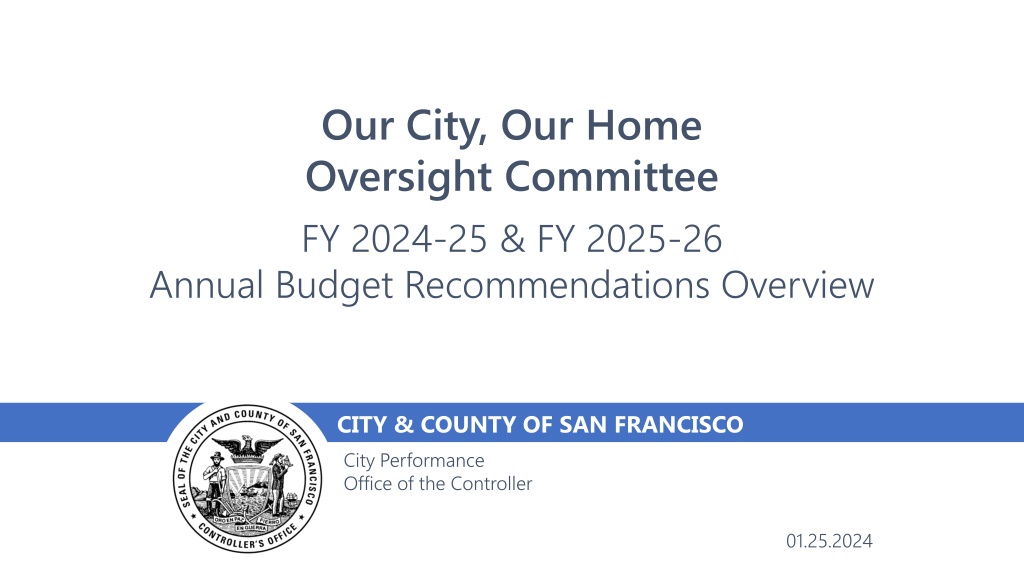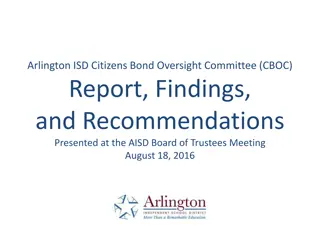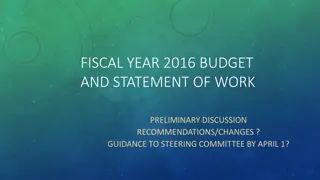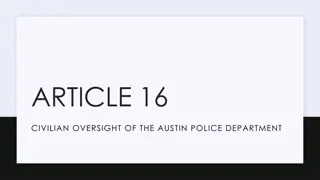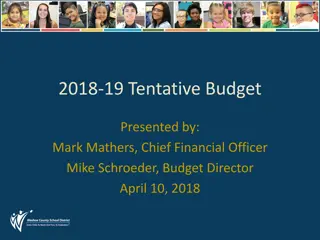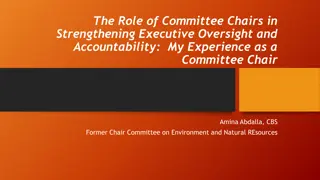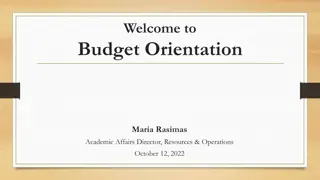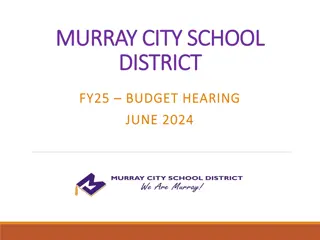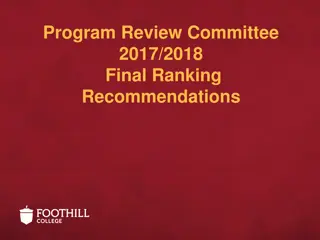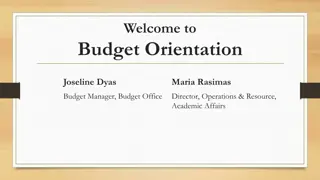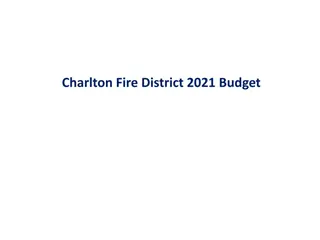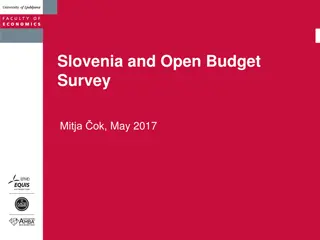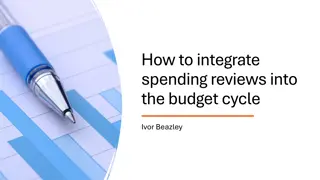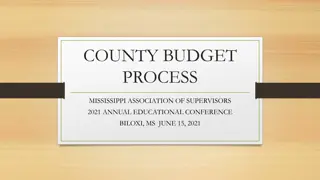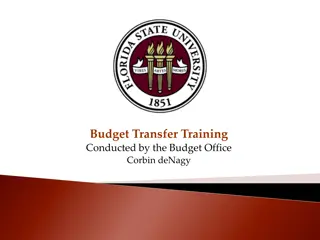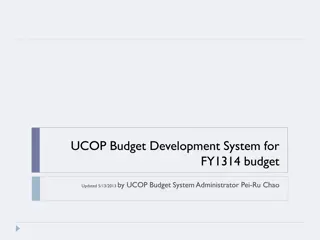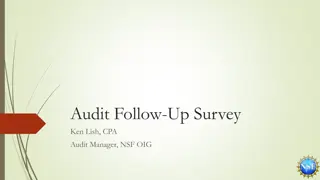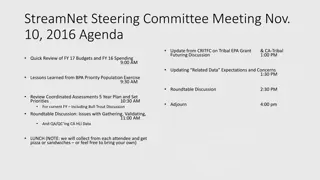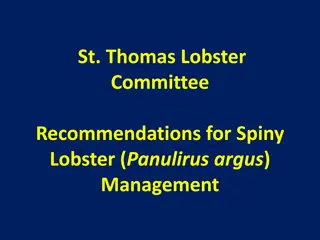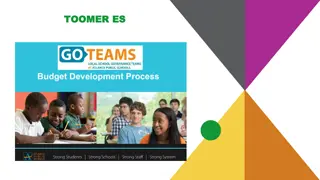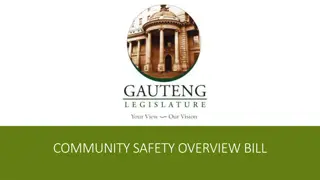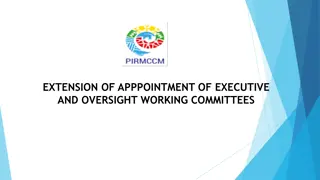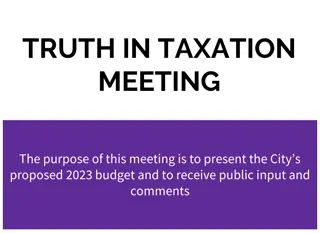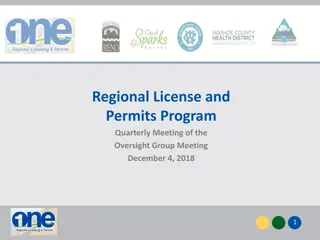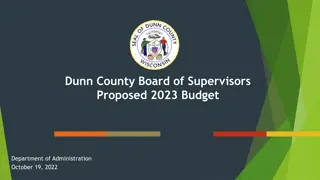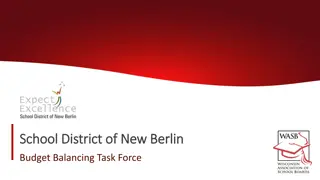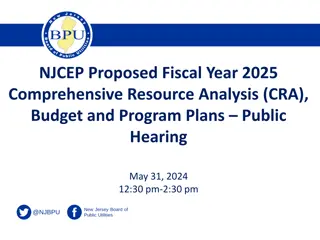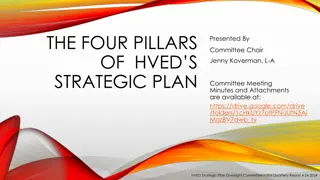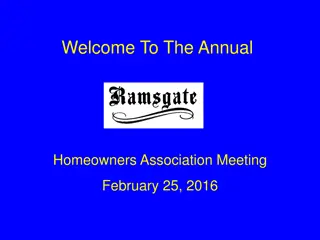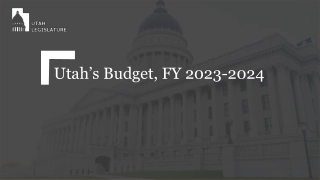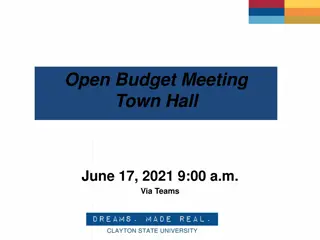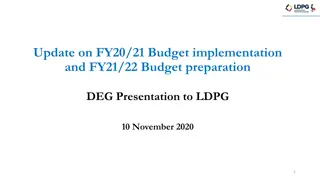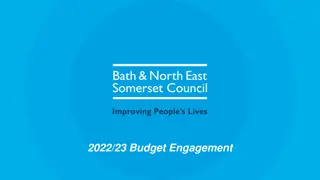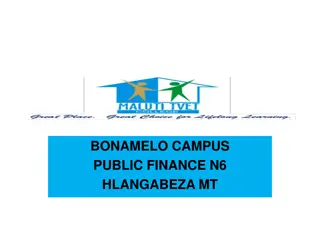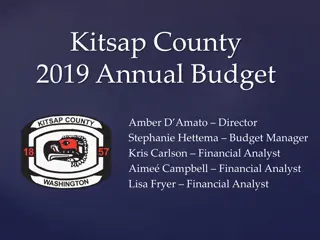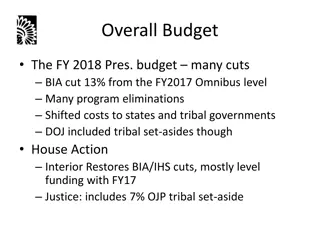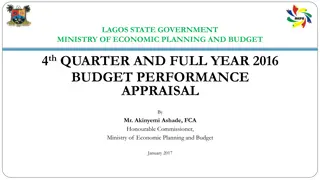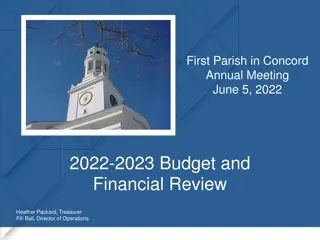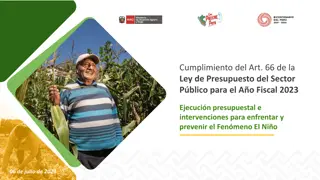Our City, Our Home Oversight Committee Annual Budget Recommendations Overview
The Our City, Our Home Oversight Committee FY 2024-25 & FY 2025-26 Annual Budget Recommendations Overview for the City and County of San Francisco focuses on priorities such as centering racial equity, expanding programs for diverse needs, prioritizing permanent housing solutions, and increasing investment through leveraging funding. The recommendations aim to address homelessness, mental health, and overall care to support vulnerable populations in the community.
Download Presentation

Please find below an Image/Link to download the presentation.
The content on the website is provided AS IS for your information and personal use only. It may not be sold, licensed, or shared on other websites without obtaining consent from the author. Download presentation by click this link. If you encounter any issues during the download, it is possible that the publisher has removed the file from their server.
E N D
Presentation Transcript
Our City, Our Home Oversight Committee FY 2024-25 & FY 2025-26 Annual Budget Recommendations Overview CITY & COUNTY OF SAN FRANCISCO City Performance Office of the Controller 01.25.2024
2 Annual Budget Recommendations Overview 1. Review of OCOH Committee Priorities and Values 2. Context Homelessness Gross Receipts (HGR) Tax Forecast 3. Timeline for FY25 and FY26 Budget Recommendations
1. Priorities and Values 3 Center Racial Equity Setting aside resources for specific populations and/or neighborhoods. As examples, transgender, youth, Bayview neighborhood, justice involved. Disaggregating reporting data by race, ethnicity, gender identity, sexual orientation and age.
1. Priorities and Values 4 A wider array of programs to meet diverse needs Permanent Housing Permanent Housing Mental Health Mental Health Flex pool subsidies including slots targeted to women, older adults, youth, and families Family housing ladder Long term subsidies for SRO families Medium term subsidies with workforce dev. Medium term subsidy extensions for families Equity services in PSH Outreach crisis and health services Drop-in mental health services including targeted to TAY and Trans communities Case Management & Care Coordination A spectrum of treatment beds Shelter and Hygiene Shelter and Hygiene Crisis Interventions like Safe Sleep and Safe Parking/Vehicle Triage Center A range of shelter program models: hotel vouchers, trailer program, non-congregate family shelter, navigation centers. Prevention Prevention Building a homelessness prevention system: eviction prevention, targeted homelessness prevention, problem solving
1. Priorities and Values 5 Prioritize permanent housing solutions to generate system flow Permanent Housing Permanent Housing Mental Health Mental Health Expanded and new clinical support services for people in PSH Acquiring & operating new site-based PSH New development of family PSH Flexible housing subsidy pool Ongoing subsidies for SRO families Family Housing Ladder Medium-term housing subsidies and extensions Prevention Prevention Housing stabilization Shallow subsidies and mental health services for legacy PSH tenants Eviction prevention Targeted homelessness prevention
1. Priorities and Values 6 Increase investment by leveraging funding and coordinating efforts to bring resources to scale Permanent Housing Permanent Housing Mental Health Mental Health Whole Person Care and CalAIM for street health and overdose response Use of OCOH Funds as match in Homekey acquisitions Use of OCOH Flex Pool funds to make Emergency Housing Vouchers accessible to people experiencing homelessness Partnerships with Workforce Development Shelter and Hygiene Shelter and Hygiene Pandemic funding from federal & state sources complemented and extended OCOH funding for temporary shelter and crisis interventions. Partnership with Adult Probation Prevention Prevention Pandemic funding from federal & state sources complemented and extended and OCOH funding for Homelessness Prevention
2. HGR Tax Forecast 7 OCOH revenue source is volatile HGR Tax revenue came in significantly below budget in the last 2 years (by $57M in FY22 and $65M in FY23). These variances are primarily due to (1) the taxpayer basis being highly concentrated so changes at a few large firms have an outsized effect on revenue (2) high levels of active business tax litigation that can affect prior year payments. 278.6 278.6 247.9 247.9
2. HGR Tax Forecast 8 FY24 through FY28 Preliminary Forecast Homelessness Gross Receipts Tax Forecast Homelessness Gross Receipts Tax Forecast (in $ million) Based on the volume of recent tax refund claims, the forecast was lowered from CON s previous assumptions. Budget Budget / / Prior Prior Proj. Proj. Key assumptions: Slow or no growth of tax base in earlier years of forecast to reflect slowing of the economy, and back to inflation in future years. Current levels of remote work continue. Lower tax base to reflect ongoing litigation risk. Current Current Proj. Proj. Year Year FY21-22 FY21-22 FY22-23 FY22-23 FY23-24 FY23-24 FY24-25 FY24-25 FY25-26 FY25-26 FY26-27 FY26-27 FY27-28 FY27-28 Actuals Actuals 278.6 278.6 247.9 247.9 Change Change 293.5 293.5 297.6 297.6 305.7 323.5 329.1 255.1 253.8 253.6 269.0 274.7 (38.4) (43.8) (52.1) (54.5) (54.4)
3. Timeline for FY25 & FY26 Budget Recommendations 9 Annual Budget Recommendations Process Timeline February February Liaison Meeting #1: Programmatic Deep Dive OCOH Committee Meeting: 6-month progress and implementation updates March March Liaison Meeting #2: Fiscal Deep Dive OCOH Committee Meeting: Updated revenue forecast Department presentations on OCOH Budget submission OCOH Committee budget priorities determination for DPH Health Commission and HSH Homelessness Oversight Commission April April OCOH Committee Meeting: Budget recommendations for MYR, DPH Health Commission and HSH Homelessness Oversight Commission
3. Timeline for FY25 & FY26 Budget Recommendations 10 Looking Ahead: February Liaison Meeting #1: Programmatic Deep Dive Committee meeting: CON will present 6-month update on Budget vs. Actuals Committee meeting: HSH and DPH will present implementation progress updates 6-month spending + implementation progress updates will help inform potential underspend at year-end and implications to service areas
3. Timeline for FY25 & FY26 Budget Recommendations 11 Committee Discussion Prompts Liaison meetings February Liaison Meeting Focus: Programmatic Deep Dive (including implementation progress) March Liaison Meeting Focus: Fiscal Deep Dive What would the Committee like to learn from those meetings? What would the Committee like to learn from those meetings? Current Budget context OCOH: $95.9M two-year projected revenue shortfall over FY25 and FY26 General Fund: $800M two-year projected deficit over FY25 and FY26 What are the Committee's overarching priorities, given the City's current What are the Committee's overarching priorities, given the City's current fiscal situation? fiscal situation?
Reference Slides Reference Slides
1. Priorities and Values 13 1. Center Racial Equity Center equity in recommendations and oversight responsibilities to be responsive to historic, structural, and systemic disparities (2 Year Investment Plan). Structural racism and economic inequality are primary drivers of homelessness (Needs Assessment). Seeking out, listening, and being guided by the experiences and voices of people with lived expertise of homelessness and housing instability (2 Year Investment Plan).
1. Priorities and Values 14 2. Prioritize a wider array of programs to meet diverse needs Prioritize a wider range of housing and prevention options that meet people where they are, not where we expect them to be (2 Year Investment Plan). Prioritize recommendations that align with the Housing First approach to system and program design that recognizes permanent housing as the solution to homelessness with low-barrier and individualized services (2 Year Investment Plan). Need flexibility within program design and duration to accommodate individualized needs (2 Year Investment Plan). People experiencing homelessness have diverse needs. An effective response to homelessness will be modeled on the population s needs and may include approaches that aren t currently part of the city-wide response (Needs Assessment).
1. Priorities and Values 15 3. Prioritize permanent housing solutions to generate system flow. Develop recommendations that facilitate system flow by pairing temporary interventions and services with permanent housing solutions (2 Year Investment Plan). Add investments with the twin goals of meeting diverse needs and increasing flow through the homeless response system will maximize capacity and effectiveness (Needs Assessment). Prioritize permanent housing solutions (2 Year Investment Plan).
1. Priorities and Values 16 4. Increase investment, leverage funding, and coordinate effort to bring resources to scale. Prioritize OCOH funds for the most strategic uses with consideration of how to most effectively leverage and fill gaps of other local, state, and federal funds (2 Year Investment Plan). Resources are not available at the scale the homelessness crisis demands (Needs Assessment). Effectively responding to all forms of homelessness will require significant new investment and coordinated effort (Needs Assessment).
